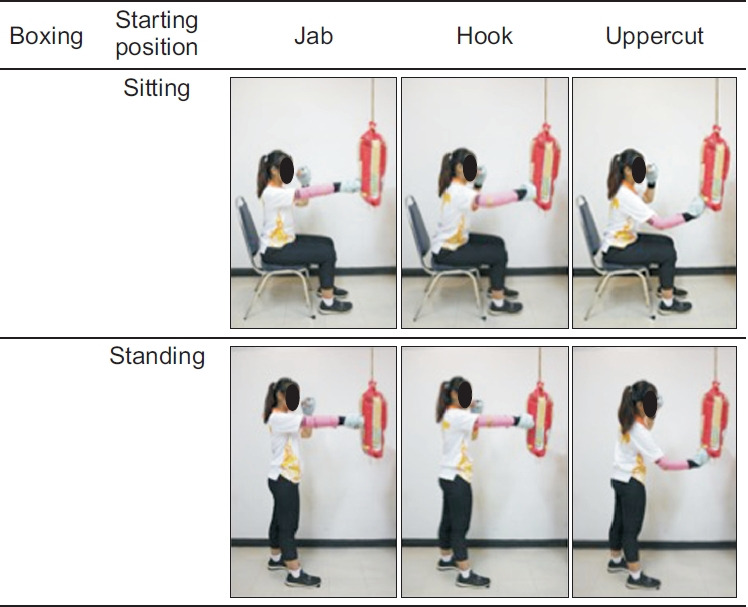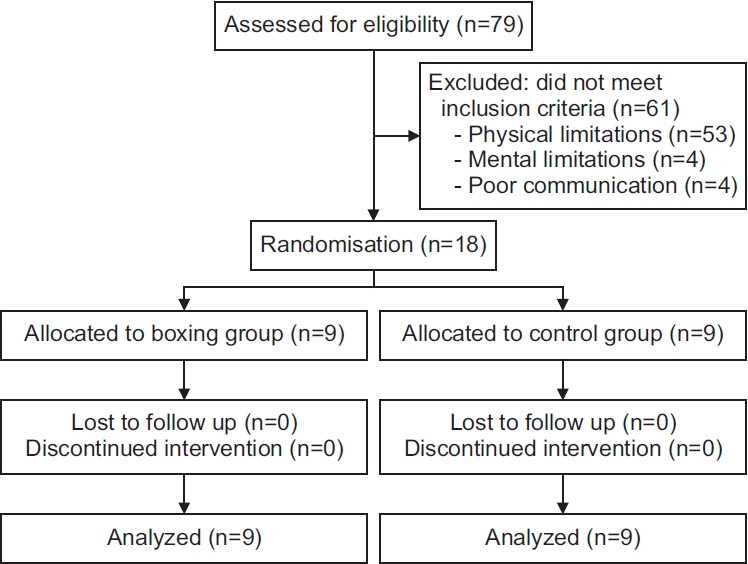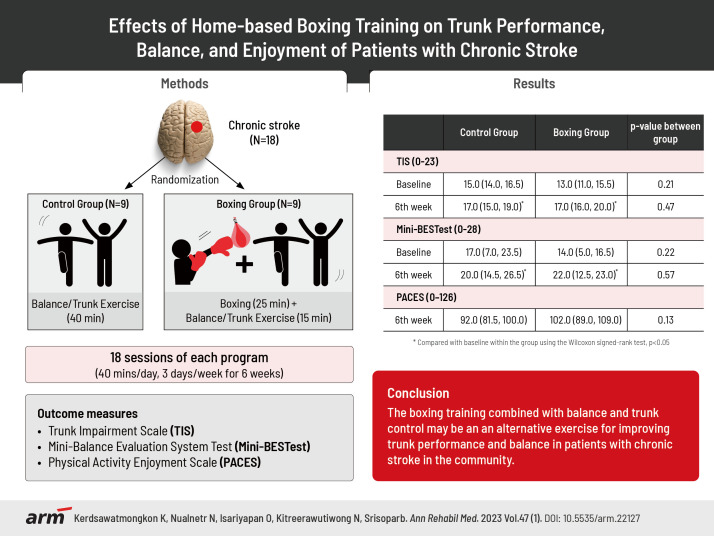Effects of Home-Based Boxing Training on Trunk Performance, Balance, and Enjoyment of Patients With Chronic Stroke.
IF 2.1
Q1 REHABILITATION
引用次数: 1
Abstract
Objective To investigate the effect of 6 weeks of home-based boxing training on trunk performance, balance, fear of falling, and level of therapy enjoyment in individuals with chronic stroke. Methods Eighteen participants with chronic stroke were randomly divided into boxing and control groups (9 patients per group). The boxing group received home-based boxing training for 25 minutes plus balance and trunk exercise training for 15 minutes, while the control group received only home-based balance and trunk exercise training for 40 minutes, three days a week for 6 weeks. The Trunk Impairment Scale (TIS), Mini-Balance Evaluation Systems Test (Mini-BESTest), Activities-specific Balance Confidence (ABC) scale, and Physical Activity Enjoyment Scale (PACES) were assessed at baseline, and at 2, 4, and 6 weeks post-training. The Wilcoxon signed rank test and Mann–Whitney U-test were used to determine differences between pre- and post-training within and between groups. Statistical significance was set at p<0.05. Results The TIS scores significantly increased from 13 to 17 points in the boxing group (p<0.05) compared to an increase from 15 to 17 points in the control group (p<0.05). The Mini-BESTest scores significantly increased from 14 to 22 points in the boxing group (p<0.05) compared to an increase from 17 to 20 points in the control group (p<0.05). There were no differences in the TIS, Mini-BESTest, ABC, and PACES scores between the two groups. Conclusion Home-based boxing training with balance and trunk exercise training had a similar training effect compared to home-based balance and trunk exercise training.



家庭拳击训练对慢性中风患者躯干功能、平衡和享受的影响。
目的:探讨6周家庭拳击训练对慢性脑卒中患者躯干功能、平衡、跌倒恐惧和治疗享受水平的影响。方法:18例慢性脑卒中患者随机分为拳击组和对照组(每组9例)。拳击组接受25分钟的家庭拳击训练加上15分钟的平衡和躯干训练,而对照组只接受40分钟的家庭平衡和躯干训练,每周三天,持续6周。躯干损伤量表(TIS)、迷你平衡评估系统测试(mini - best)、特定活动平衡信心量表(ABC)和体育活动享受量表(PACES)在基线、训练后2周、4周和6周进行评估。使用Wilcoxon符号秩检验和Mann-Whitney u检验来确定组内和组间训练前后的差异。结果:拳击组TIS得分由13分显著提高至17分(p)。结论:家庭拳击配合平衡躯干运动训练与家庭平衡躯干运动训练相比,训练效果相似。
本文章由计算机程序翻译,如有差异,请以英文原文为准。
求助全文
约1分钟内获得全文
求助全文
来源期刊

Annals of Rehabilitation Medicine-ARM
REHABILITATION-
CiteScore
2.50
自引率
7.70%
发文量
32
审稿时长
30 weeks
 求助内容:
求助内容: 应助结果提醒方式:
应助结果提醒方式:


